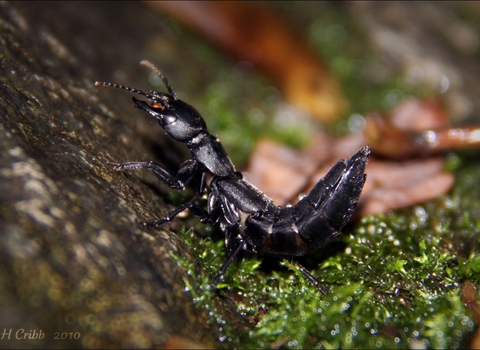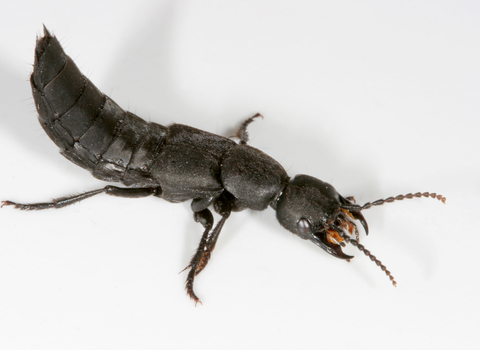
Devil's Coach Horse ©Russ Cribb

Devil's coach horse ©Paul Richards
Devil's coach horse
A ferocious and fast predator, the devil's coach horse beetle hunts invertebrates after dark in gardens and on grasslands. It is well-known for curling up its abdomen like the tail of a scorpion when defending itself.
Enw gwyddonol
Ocypus olensPryd i'w gweld
April to OctoberGwybodaeth am rywogaethau
Categori
Ystadegau
Length: 2.8cmCommon.
